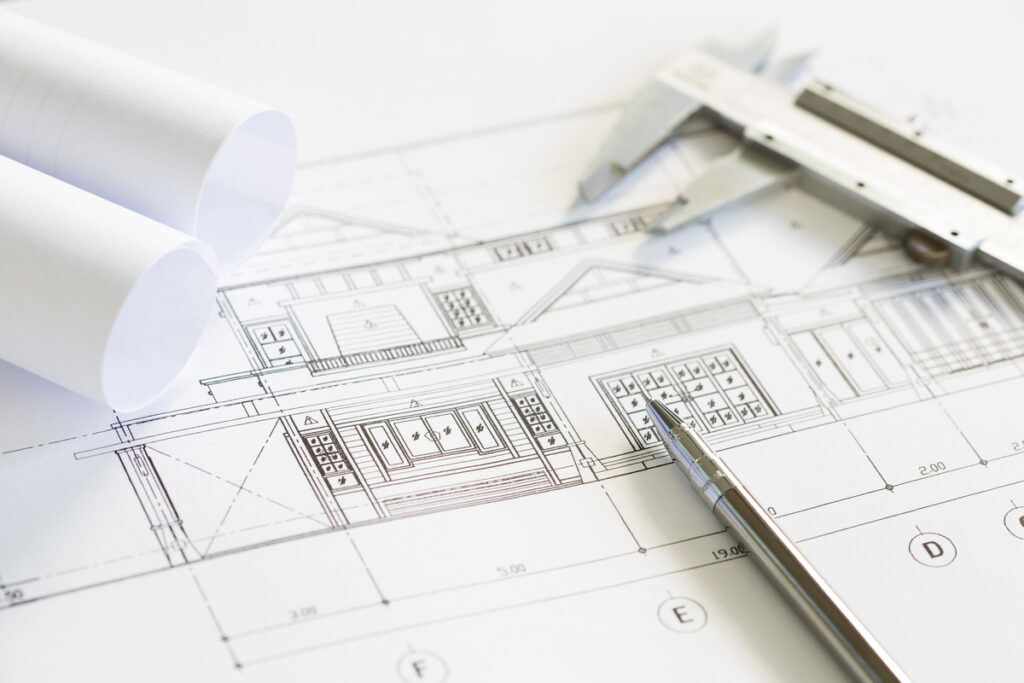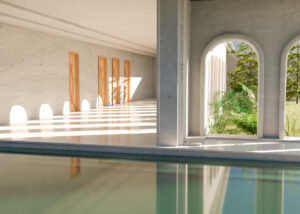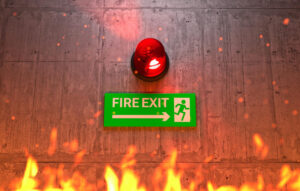Drawings are the foundation of the complex fields of architecture and construction, acting as a link between an idea in the mind and a physical structure in the real world. These accurate and meticulous drawings are more than just hand sketches; they serve as a language and a channel of communication for clients, contractors, engineers, and architects. They set the pace for building, making sure that each brick and each beam erected was in line with a larger plan.
But not every drawing is made equally. Although they are all essential to the building process, there can be differences in their goals, schedules, and specifics. Design drawings and as built drawings are two of these that frequently stick out and can occasionally cause confusion. They may appear similar at first, but when you look closer, you can see how they differ. The purpose of this article is to clarify these distinctions so that both experts and amateurs can easily navigate the complex world of building documentation.
It’s crucial to understand the purpose of constructed drawings, the information they contain, how they’re made, and how they differ from recorded drawings before beginning any construction job. Although as built drawings are a necessary component of the building process, they are frequently neglected because they are usually created at the very end.
They shouldn’t be, though. As built drawings should be considered by architects, contractors, and house designers at every stage of the design and construction process. This is because the final appearance of your as-built drawings will reveal a lot about the project’s success.
Table of Contents
What are Design Drawings?
Design drawings are first sketches and blueprints that are painstakingly created by architects and engineers. They are sometimes the first visual depictions of a project. The goal of these drawings is to bring a vision to life on paper by including a variety of elements, from detailed requirements to broad basic ideas.
Design drawings purpose:
- Communicating Design Intent: The architect’s or designer’s vision is fundamental to design drawings. By clearly articulating the desired final structure’s aesthetics, functionality, and spatial relationships, these drawings guarantee that all project participants have a common understanding of the project’s objectives.
- Getting Building Permits and Approvals: Often, projects require authorization from local officials before building can start. Design drawings give the essential information, guaranteeing that the suggested structure complies with building norms, zoning laws, and other requirements.
- Leading Contractors: Design drawings serve as the construction blueprint after they are approved. They serve as a guide for contractors, providing comprehensive instructions on materials, dimensions, and other important details to make sure the finished structure matches the intended design.
What are As Built Drawings?
As built drawings are updated sets of drawings that a contractor submits after a specific job is finished. They accurately depict every modification made throughout the building process.
A construction project’s as built drawings are a crucial element. They document any alterations made while the project is being created and act as duplicates or recreations of the construction process.
All construction projects, no matter how big or little, undergo several alterations, revisions, and adjustments before they are finished. No matter how little the changes, as built drawings assist in visualizing the changes being made and predict how they will affect the finished project. An as built drawing’s primary function is to document any changes made to the construction process that differs from the original plan.
When a construction project is planned, the initial drawings created for it are not the ones that are required when the project is completed. Rather, the as built plans must be submitted by the contractor. These drawings represent the updated version, which contains all specification modifications, precise measurements, element locations, and additional work. Record drawings are another name for as built drawings.
The building’s architect or designer typically completes the as built drawings since they are knowledgeable about the original specifications and can accurately document the modifications.
Of course, since they are knowledgeable about the project and the adjustments required throughout the building process, the contractor and subcontractors can also contribute to the revisions.
Assisting in the compilation of the as built drawings can be achieved by keeping a thorough record of all the notes and papers created during the building process. Without these notes, certain things would likely be overlooked, which could have negative consequences later on.
Difference Between As Built Drawings and Design Drawings
Knowing the subtle differences between each style of architectural drawing is essential to navigating the world of architectural drawings. Even though they may appear similar at first look, design, and as built drawings have different functions and special qualities. Here are some details about their main distinctions:
Timing of Creation
Design drawings are the starting point of any construction project. They are the starting point for the construction process; they are created before any bricks are laid or the foundation is poured.
As built drawings evolve as the construction progresses. Although certain features may be recorded throughout the building process, the final as built drawings are usually finalized and produced post-completion to guarantee they accurately depict the structure’s ultimate state.
Accuracy and Detail
Design drawings tend to be more conceptual. Even while they offer a thorough understanding of the project, they might not take into consideration every real-world issue that could come up when it’s being built. Changes in the real construction process may result from unforeseen site conditions, material shortages, or financial limitations, for example.
The pinnacle of precision and detail as built drawings depict the structure precisely as it was upon completion, with all modifications and variances made throughout the building process included. A true portrayal of the constructed environment is provided by the documentation of every nook, crevice, and modification.
Usage and Audience
Design drawings are intended for a wide range of users. Regulatory organizations inspect them to verify compliance with local codes and regulations, clients review them to imagine the finished product, and contractors refer to them to grasp construction intricacies.
As built drawings cater to a slightly different target audience. They can be consulted by building owners for facility management, by facility managers to better comprehend the complexities of the building for upkeep, and by future contractors before starting any modifications or additions.
Modifications and Revisions
Changes are frequently made to design drawings. A project’s scope may vary before construction due to client feedback, legal restrictions, or other circumstances.
As built drawings are dynamic. As the building process advances and modifications are made to the initial blueprint, the as built drawings are updated to account for these changes. After the building process, they offer thorough and precise documentation of the structure as it is completed.

What are As Built Drawings Used for?
In any building project, detailed plans are vital for success. Building features are likely to alter during a project if the contractor runs into issues with supplies, the location, or governmental bodies. As built drawings, particularly for commercial construction projects, are required to document these modifications and preserve an accurate depiction of the building as it exists.
As built drawings serve a variety of purposes in the fields of building maintenance, rehabilitation, and new construction.
- New Construction: Contractors may encounter several obstacles when erecting a building that was only imagined on paper, and they will need to modify their building plans accordingly. To have an exact drawing of the building after construction is finished, these drawings document these modifications as they occur.
- Renovation Projects: Gaining a thorough understanding of the building’s current state is crucial before beginning any renovation work. Thus, using current drawings is crucial to ensuring a secure and effective refurbishment.
- Building Maintenance: Little alterations and enhancements will be made to a building throughout time. To maintain an accurate picture of the building at all times, it is expected that the maintenance crew of a building will update drawings to reflect any changes made to the building.
What Should be Included in As Built Drawings?
Any modifications to the following components must be included for the designs to be comprehensive and functional as built drawings:
- Locations: Take note of any modifications made to the placement of any doors, window frames, plumbing, millwork, or other crucial components.
- Materials: When alterations are made from the original plan, note all variations in the materials utilized.
- Dimensions: Record any changes made to any construction element’s measurements.
- Installations: Enumerate certain changes made to the HVAC, electrical, or window installations within the building.
- Fabrications: Keep track of all modifications made to the handrails, beams, and columns.
It’s crucial to remember that as built drawings can also contain additional papers, handwritten notes, and images, such as photos or satellite imagery.
How are As Built Drawings Created?
Knowing who is in charge of making as built drawings and what procedure to follow when doing so is crucial to producing high-quality as built drawings.
It’s crucial to understand that modern as built drawings are typically produced using construction technology and software like AutoCAD, giving all parties involved access to up-to-date building plans at all times.
The person in charge of construction will often develop the project’s drawings. It is less frequent, though, for architects to be involved in a project as they are not always on-site to supervise the building process. The contractor may often update the building blueprints as soon as changes are made because they are present on-site throughout the structure’s construction.
It’s beneficial to bear in mind the following procedure when producing constructed drawings:
- Color Coding: Standard color legends are used in as built drawings, with red denoting deleted things, green denoting additional items, and blue denoting special information.
- Scale: Any changes made to drawings must maintain the same dimensions and scale as the original designs.
- Dates: Any changes made to the building plans should be dated and, if required, accompanied by further documentation.
- Obstacles: Drawings should be included for every hurdle that is faced during the process, regardless of whether it is the result of governmental agencies, the environment, or anything else.
- Physical Features: Pay close attention to any modifications to elevations, grades, or other physical features that were found or altered throughout the construction process when using earthmoving equipment.
- Underground Utilities: Be careful to record the precise positions of any utilities put below ground while the building is underway.

The Different Types of As Built Drawings
As built drawings come in a variety of forms, each with its level of detail, emphasis on distinct systems, and location (such as the site, roof, ceiling, elevations, or sections).
A floor plan layout is the most fundamental and popular type of drawing. It comes with every as built drawings bundle and serves as the foundation for all other as built drawings. In its most basic form, a floor plan as built drawings would display a structure or building’s walls, windows, and doors.
More intricately, a floor plan can incorporate all of the building’s systems and components, including electrical outlets, switches, bathroom fixtures, and kitchen cabinetry. Professionals who provide as built drawings and services usually offer it in bundles and packages that differ in the level of detail provided.
Standard As Built Drawing Set
When a property owner wants to construct an addition, modify their home, or install an ADU (Accessory Dwelling Unit), they need a standard as built drawing set.
The drawings in this as built set are as follows:
1. Floor Plan
Typically, an as built floor plan will display the walls, doors, windows, stairs, and internal and exterior features. A typical floor design will have the sink, refrigerator, and stove in the kitchen and the sink, toilet seat, and shower or tub in the bathroom. A thorough as built floor plan will go one step further and show the current state of every piece of furniture and casework in the room.
For instance, it will identify and list all of the kitchen appliances, including the trash compactor, dishwasher, wine refrigerator, and any other appliances, as well as point out and describe the different kinds of casework components that are there. Seldom will the furnishings be provided unless specifically requested by the client or required. For basic interior design projects, such as new furniture layouts, an as built floor plan is usually all a designer needs to complete their design.
2. Exterior Elevations
Building exterior elevations are used to display a building’s external appearance. It shows how a building is laid out, including where the windows and doors are located. Exterior elevations that are detailed as built typically specify the type of material and finish used for the walls and may also show the windows and door frames. It would even suggest how a pattern of building materials should be arranged or looked at.
To comprehend how a structure stacks its levels and where its many windows and doors are located, design professionals must view the outside elevations of the building as it is constructed.
3. Roof Plan
In addition to illustrating how the roof overhangs over the walls below, a roof plan frequently provides information regarding the slope of the roof. The locations of vents and mechanical equipment will be marked on detailed roof designs. In order to plan expansions to a property and display the new roof layout, structural engineers and architects need as built roof blueprints.
Detailed As Built Drawing Set
To account for every aspect of a property, owners and their design professionals seek comprehensive as built drawings when a building project has a broad scope of work.
4. Reflected Ceiling Plan (RCP)
A simple as built reflected ceiling plan will display the locations of lighting fittings, fans, skylights (if any), attic access openings, and the general outline of the ceilings and levels.
In addition to the items listed in the basic package, standard as built RCP drawings typically show the locations of the vents and the various kinds of lighting fixtures.
A very thorough set of RCP as built drawings will go one step further and pinpoint the locations of other systems such as ceiling-mounted electrical outlets, fire sprinklers, and, if present, exit signs.
To plan for the location of new fixtures and take into account the existing lighting and electrical fittings, interior designers frequently ask for as-built reflected ceiling drawings. Commercial properties have much more complex ceilings because of the different systems that are required to be placed.
5. Cross Sections
When architects require drawings to be made, building sections or cross sections are most likely the most frequently requested drawings. As built sections are crucial for illustrating stair outlines and helping people comprehend how a structure differs in level. It might also reveal the thickness of the floor and aid in understanding how a building’s floors are stacked. Although detailed cross-sections are not frequently shown in as built drawings, they do include materials and framing information.
6. Electrical Plan
Designers sometimes ask for an electrical as-constructed plan while they are working on interior design projects or applying fresh surface finishes. An electrical plan often shows the locations and heights of outlets and switches, whether it is created for new construction or as constructed documentation.
Even the kind of outlet and switch that are present on-site, such as GFCI outlets, will be determined by a very thorough electrical design. In addition to interior designers, electrical contractors ask for as built electrical blueprints when putting in bids to improve and replace old outlets.
What is the Purpose of As Built Drawings?
As built drawings serve as precise documentation of a project’s finished construction. They offer a shared point of reference that all parties may utilize to comprehend how the project is being built and to make any required adjustments or fixes.
1. Identify and Record Changes from the Original Design
As built drawings should always be compared to the original design as part of the building process. You can next check to see if the finished product adheres to the original design and requirements and make sure that any modifications made during construction are appropriately reflected.
Furthermore, drawing comparisons between the as built drawings and the original design might shed light on any problems or difficulties encountered during construction and serve as guidance for future projects.
2. Provide Accurate Data for Future Repairs, Maintenance, Renovations, and Equipment Replacement
A crucial tool for future maintenance, repairs, restorations, and equipment replacement. They offer precise details regarding the completed state of a building project, which facilitates subsequent work and guarantees that everything works as it should. Construction projects can be successfully finished by depending on excellent documentation produced by experts.
3. Prevent Mistakes and Expensive Rework
By guaranteeing that the final construction of a building or infrastructure project is executed according to the specified design and requirements, these drawings can avoid errors and costly rework. As built drawings offer precise documentation of the project’s completed construction, which can be compared to the original design to find any differences. Early detection of these discrepancies allows for the making of repairs before they become more expensive to fix.
4. Ensure Compliance with Governmental Regulations and Standards
As built drawings are essential for guaranteeing that building projects adhere to government requirements and laws. You may make sure that all relevant local construction ordinances, zoning laws, safety standards, and other criteria are satisfied by closely examining the as built drawings. By identifying and correcting any regulatory deviations, this paperwork can assist in guaranteeing that the finished product is safe and fully compliant.
The Importance of As Built Drawings
Although it’s not a requirement for every work, submitting as built drawings adds value to any finished project and, when done properly, enhances the professional image of your business. According to the American Construction Management Association:
“They are important for those who use the finished product, as they provide a legacy of what was built. This legacy becomes more important, as we continue to build on top of old work, land ownership changes or for public works, as employees familiar with what was-built are replaced over time by attrition.”
Although as built drawings are not required for every project, they are a crucial element that can enhance a business’s reputation and success once it is finished.
As built drawings provide a record of a project by illuminating its construction. People may wish to familiarize themselves with what was built in the event of a change in land ownership or the need to build over the existing works. These are the primary justifications for creating as built drawings:
- Saves Time: New subcontractors must be added as a project progresses. With the required as builts, it is simple to obtain accurate information immediately, reducing project delays.
- Displays a History of Change: As built drawings facilitate quicker problem solving by clearly depicting change. Construction can go more quickly and more cheaply when operations are conducted more efficiently from as built designs.
- Simplifies the Granting of Permits: Governmental organizations may ask for as-built drawings before granting permissions.
Enhances remodeling Owners don’t have to spend a lot of time learning about the current state of affairs when they wish to perform modifications. - Enhances a Contractor’s Reputation: You may not think that purchasing as built drawings is necessary if you’re a contractor. Nonetheless, creating as built drawings raises the caliber of your offerings. By exhibiting a contractor’s work, they can help to enhance their reputation. They demonstrate a contractor’s capacity to finish a project successfully. It benefits project owners as well as you in terms of getting future employment.
- Improved Onboarding: As built drawings help teams gain access to the correct information quickly, which allows any new subcontractors to get up to speed and start work sooner.
- Improved Health and Safety: It is crucial to accurately describe the layout and location of elements such as emergency lighting, fire alarm systems, and smoke detection devices. If these deviate from the original plans and are not recorded, it could put people’s lives at risk. For example, errors were reported in the as-builts in the case of the Grenfell Tower fire in 2017, which resulted in 72 deaths.
- Better Building Maintenance: Maintenance teams lose time and money if they do not have accurate information on dimensions and locations. They require a clear picture of the actual building layout, whether they are replacing paneling or searching for wiring.
- Future Work and Demolition: An accurate view is crucial if future contractors want to make changes to the structure or if it is demolished.
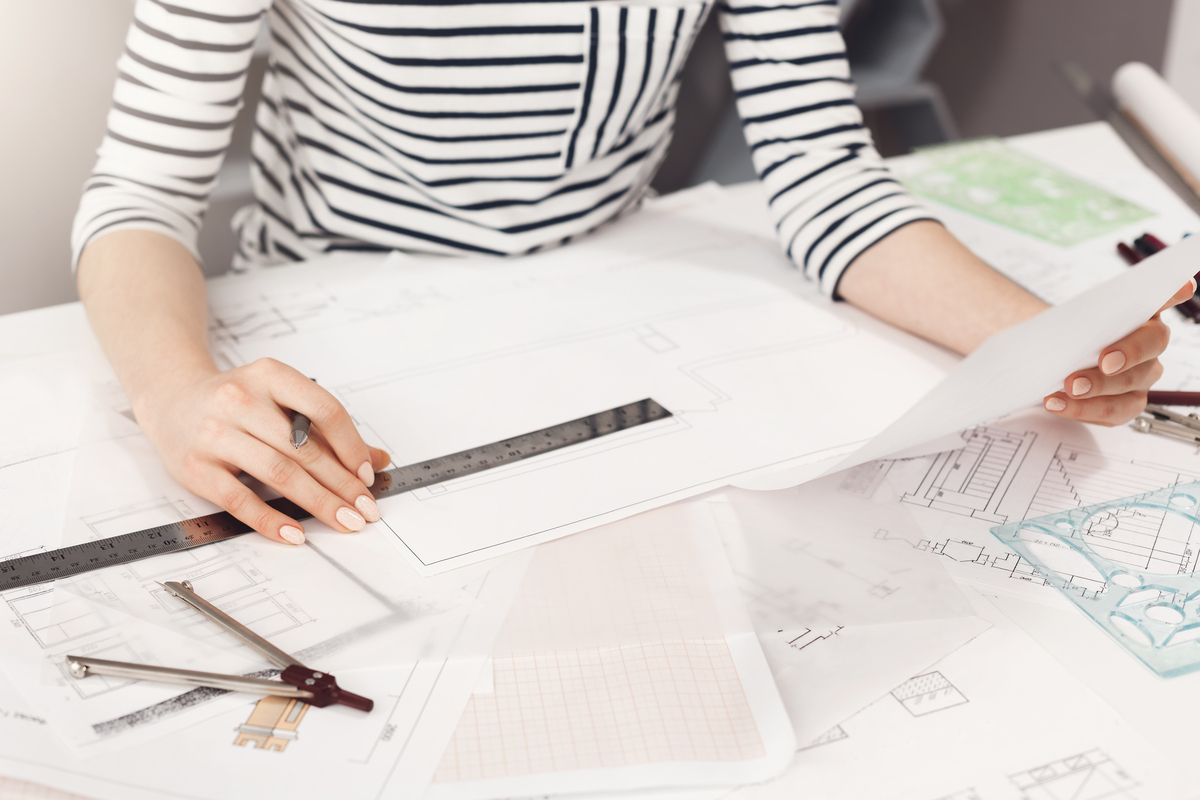
How to Prepare As Built Drawings
As built drawing preparation calls for exactitude and painstaking attention to detail. Examining the initial designs, measuring the site, finishing the drawings, scanning the images, and revising the original design ideas are all part of the process. The team responsible for building the project creates the as-built drawings.
1. Field Walkthroughs
Field walkthroughs offer a chance to confirm that the data in the as built drawings is correct and current. They make it possible to visually evaluate the building or structure, which can disclose features from plans or other paperwork that might not be clear.
Field walkthroughs entail going to the construction site and looking over the building or structure to see if there have been any alterations made to it from the original plan.
You can record changes or revisions made by taking measurements, sketching, and taking notes during a field walkthrough. This guarantees that the final construction of the building or structure is appropriately reflected in the as built drawings.
2. Completion Certificates Review
Completion certificates are significant records that act as a building or structure’s seal of approval. They guarantee that everything is constructed by standards by verifying that the construction process adheres to the precise plans and specifications. Anyone accessing the building can feel secure knowing that it is safe thanks to these certificates.
Examining the completion certifications is essential for producing as built drawings.
These certificates serve as the building or structure’s equivalent of a report card, showing whether or not all required approvals and inspections have been completed. We can confirm that the building conforms with the guidelines established by building codes and standards by looking over these certificates.
Important systems including the building’s mechanical, electrical, and structural components are detailed in the completion certificates. They also discuss any inspections that happened while the project was being built. This comprehensive examination guarantees that everything is up to the mark and compliant with the necessary regulations.
3. Change Order Evaluation
The process of evaluating any alterations or adjustments made while a building or structure is being constructed is called a change order evaluation. Any alterations made to the original construction plans, such as adjustments to the design, the materials utilized, or the construction techniques, are documented in a change order.
Examining these documents to see how they affected the building or structure’s development is part of the change order evaluation process. The as built drawings and the original construction plans are examined during the change order evaluation process to find any discrepancies or alterations.
4. Digital Photograph Collection
A collection of digital photos collected during the construction of a building or other structure and used to record the development of the construction is referred to as a digital picture collection in as built drawings.
After that, these pictures are added to the as built drawings to create a visual documentation of the building process.
Photographs showing several phases of the building process, including excavation, foundation work, framing, installation of mechanical and electrical systems, and finishing work, can be included in digital photo collections in as-built drawings.
The construction crew or an outside photographer may take the pictures, and a range of tools, such as digital cameras, cell phones, or drones, may be used. As built drawings are increasingly using digital photo collections and other technologies to support other paperwork, like building plans and specifications.
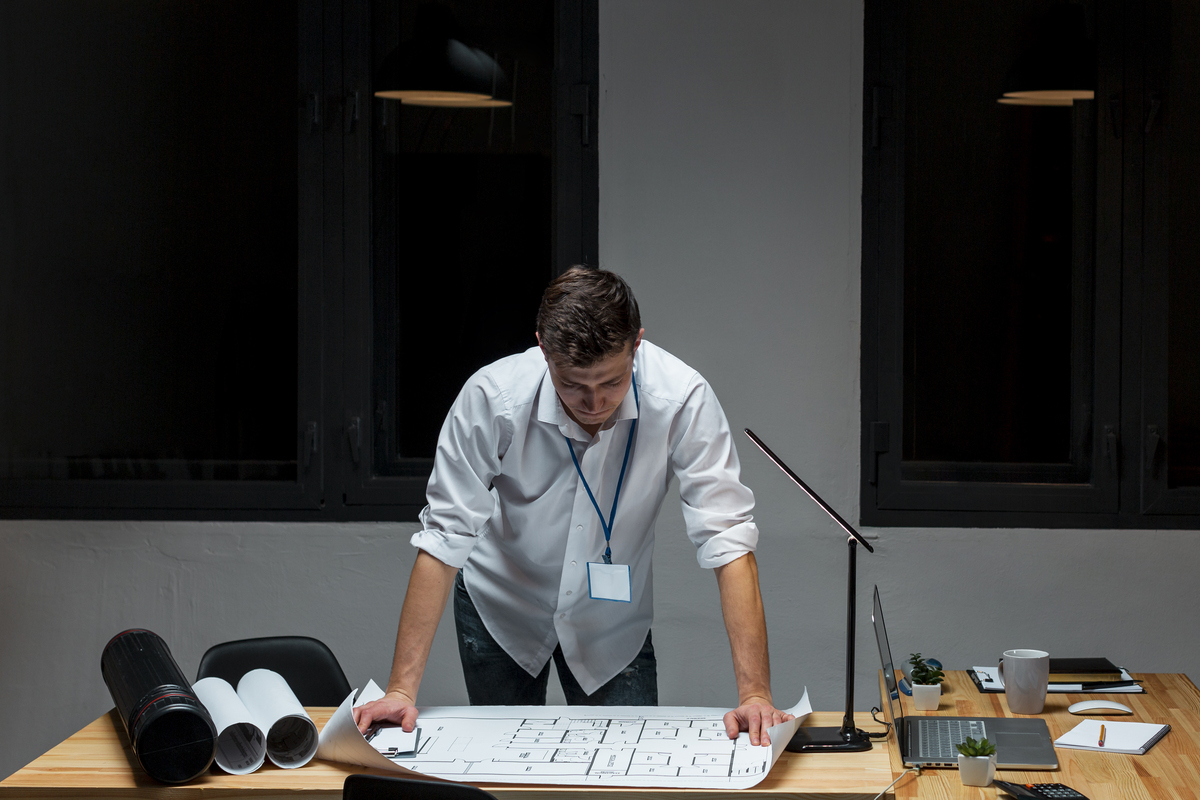
How to Use As Built Drawings
As built drawings might be advantageous to a large number of workers engaged in a project’s building phase. To correctly use an as built drawing for your next building job, follow these steps:
1. Reference the Original Specifications
Examine the specifications provided in the original project drawing before efficiently documenting your adjustments. Comparing the final as built drawing and the initial drawing may become simpler as a result.
Taking a tangible copy of the specifications and using it to record modifications made during the building process is beneficial. Additionally, you can snap a photograph of the specs with your phone and utilize it as a guide to create the as built drawing.
2. Document any Changes Made
Keep a record of all the adjustments you direct subcontractors and construction workers to make as the project is being built. As soon as staff members make these modifications, they should be noted, along with the date, on each page. Make sure you’re taking thorough notes because you will utilize these documented alterations as a guide later on when you create your as built drawing.
3. Create a Clean and Labeled Drawing
You can start working on your as-built drawing as soon as the project is finished. Your picture will probably be viewed by a wide range of project participants, so it’s critical to create a clear, labeled drawing that’s simple for you and other readers to understand.
This can be accomplished by utilizing components such as a drawing scale, a color scale, and a format for changes tracked. This gives you a neat, unified, and polished appearance that you can present to the project manager and include in your portfolio for upcoming building projects.
4. Use Software Tools to Build it
As built drawings can be created by contractors, designers, or architects using pen and paper, although software programs are now available to assist with the process. You can email and submit your drawing to project managers more quickly and easily if you use these tools.
Project managers can increase efficiency for all project participants by sending the digitally delivered as built drawing to clients for evaluation and approval. Hiring managers can more readily view your digital portfolio if you include the digital version of your as built drawing in it.
5. Save and Review the Drawing
After finishing the as built drawing, you can store it in a file for later use. If you want extra information about the construction process and a deeper understanding of the materials you utilized for the structure, contractors can find it.
Years later, if they still need to make adjustments, improvements, or renovations to the project, they can go back and inspect the drawing. This makes it simpler for them to figure out what supplies, machinery, and tools they’ll need to finish building the construction.
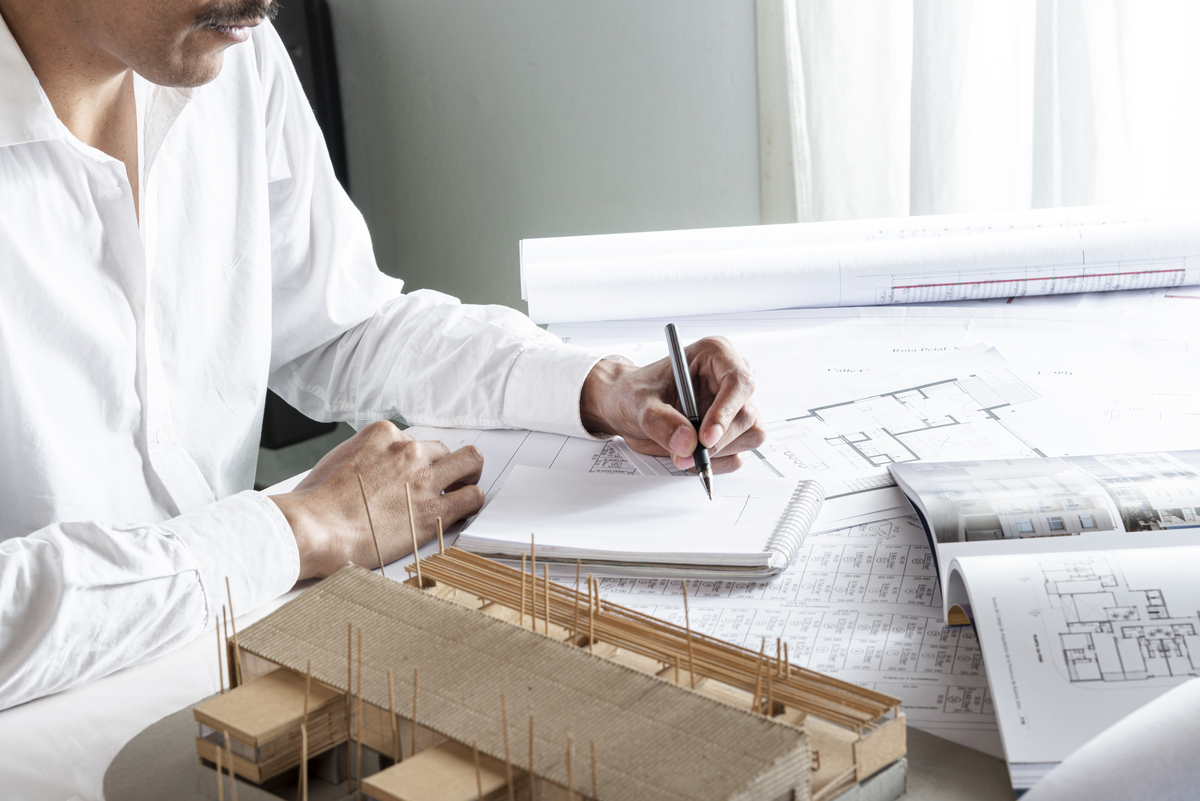
As Built Drawings in the Digital Era
Pen and paper documentation is becoming less common in construction work processes, and digital platforms for documenting are beginning to take over the workplace and the field. As built construction is becoming more efficient with the increasing use of as built software on mobile devices.
A few applications that enable the creation of as-built drawings have begun to appear, making it simpler to create and modify as-built drawings on any mobile device. This as built software not only makes as built construction more efficient, but it also improves building process accuracy.
As-builts have always required a great deal of labor, with particular attention paid to guaranteeing their precision and correctness. All of the difficult jobs may now be standardized, digitalized, and even automated for a simpler review and record procedure thanks to mobile technology and pre-built software. Better builts and building projects are the outcomes of using as built software and construction technology.
The best as built quality can be achieved with construction technology and as built software. If you choose the appropriate mobile solution for your as-builts, you may record any modifications performed on the job site in real time, straight from the field. This allows you to go over any fresh data and incorporate the pertinent ones into your as built drawings.
As Built Drawings Tech Tools
The construction industry has been greatly impacted by technology, and as-built drawings technology is no different. While at the site, you can electronically record and instantly gather data with tools and apps like FieldWire and PlanGrid.
1. FieldWire
Field workers utilize the FieldWire software solution, which includes an app, to take notes and add images to drawings while events are happening. The ability to connect images and provide your field crew with the most recent, precise drawing is one of FieldWire’s main advantages. The software updates the drawing and makes it available to all team members by syncing notes, tasks, and other data. FieldWire keeps track of who makes modifications and what kind of data is stored in a change proposal log.
Time and money can be saved by using these functionalities, which make the as-built drawing process simpler and quicker. For smaller projects and businesses, Fieldwire provides free services. For larger projects and collaboration tools, Fieldwire offers more comprehensive plans.
2. PlanGrid
Another source for as built drawings is PlanGrid, which may transform teamwork into a cost-cutting endeavor that results in a comprehensive collection of current drawings. As-built drawings can be downloaded by the software as they are updated.
For a dependable and effective operation, this service provides interactive features and maintains editable and updated information. PlanGrid offers a sign-off process that expedites the process of turning over the paperwork and data required to finish up the project, which is one of its main advantages.

Conclusion
It’s a necessity to keep track of any modifications contractors have made to the original project drawing and specifications while the project is under development. When making future upgrades and renovations to the project, contractors can refer to the as built plans for guidance. Gaining knowledge of as built drawings will enable you to accurately document any modifications made by construction personnel, along with the dates of such modifications.
As built drawings give a thorough blueprint of the building and surrounding land as they were ultimately built, enabling comparisons between the designed and final requirements. A “revised set of drawings submitted by a contractor upon completion of a project or a specific job” is known as an as built. They display the precise measurements, geometry, and locations of every component of the work finished by the contract, and they take into account all modifications made to the specifications and working drawings during the building process.
Teams can refer to as built drawings as a complete record of all project updates and modifications when making necessary adjustments, repairs, or renovations. Contractors have access to the projects completed by former staff members, the materials they used, and the date of construction. Because they don’t have to test the structure to ascertain its current problems, the contractor can save time as a result. Rather, the as built drawing provides customers with the conditions so they may start making their improvements or upgrades right away.
As built drawings are a necessary part of any successful construction project. Changes to the original building plans will inevitably occur while the project is being constructed, but with judicious use of as built drawings, stakeholders will be satisfied and the project will be expertly completed.
Suggested article for reading:
AI or Artificial Intelligence in Project Management
The 18 Best AI Architecture Generators of 2024
The Role of Architecture in the Metaverse; Comprehensive Guide 2024
Resources:
Autodesk | Indeed | Bigrentz | Cedreo | Letsbuild | Proest | Linkedin | Jaycad | Planradar | Procore | KREO | Bluentcad
For all the pictures: Freepik

